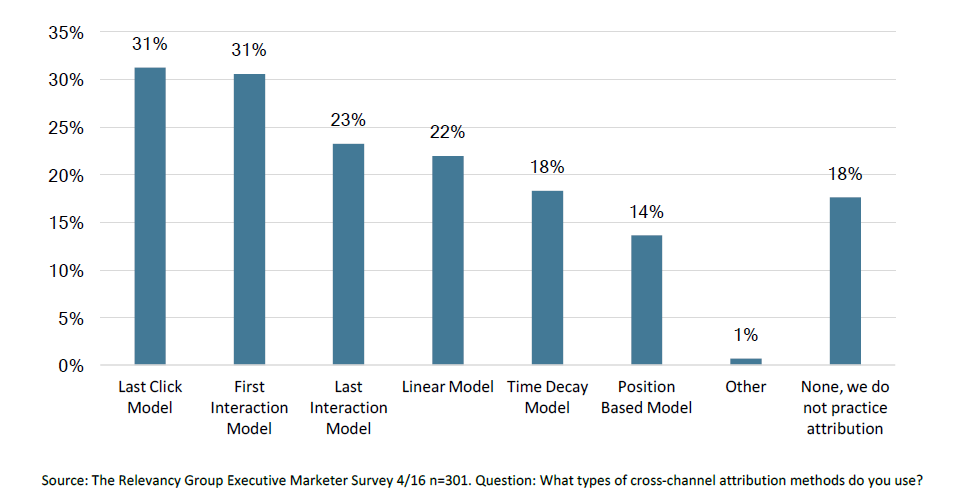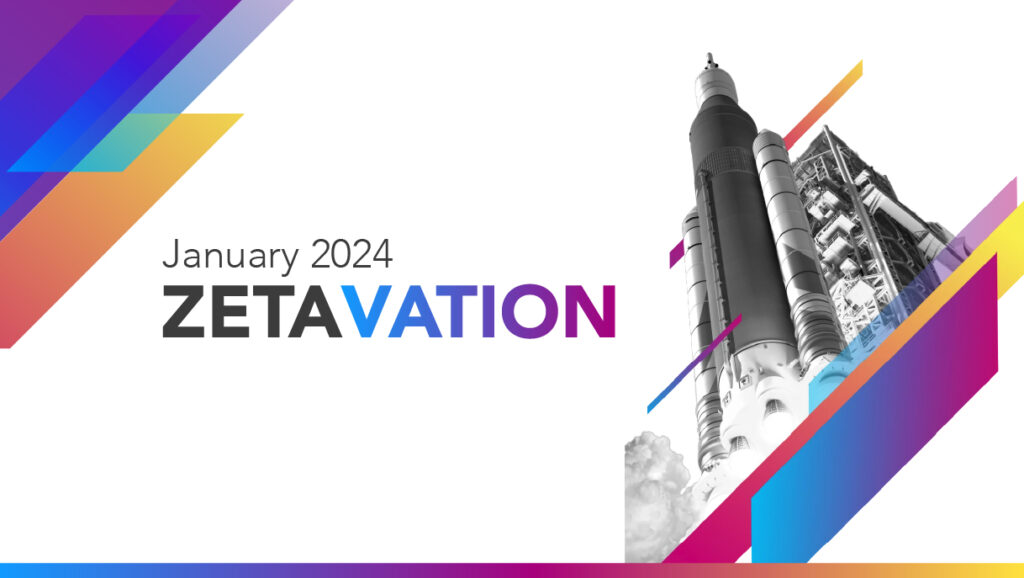
Articles | January 1, 2020 | 3 min read
Understanding the Best Attribution Mix for Continued Growth
With the arrival of the new year, now is the perfect time to assess your marketing performance and the analytic methods you use to measure growth. At Zeta, we help our clients improve their marketing performance through a variety of approaches, including attribution analytics. By reading this blog, you’ll obtain a clearer understanding of the best attribution mix for continued growth. Let’s get started…
In a survey conducted by the Relevancy Group, Zeta Global confirmed that marketers aren’t satisfied with current attribution analytics methods being implemented—and, as a result—are experimenting with different approaches. The chart below demonstrates what marketers have adopted in the way of cross-channel attribution:

There’s no doubt that the best marketers still rely on a basic last-click model for channels like email. Last-click is often how marketers break ground on attribution measurement. For retailers, email is a strong closer, and last-click is an easy way to calculate marketing return. That said, relying on this single model to value a channel miss-values the channel and limits the understanding of how channels support each other to close the sale. Identifying the role that email plays in the purchase path, for example, can help a marketer target and respond to trends and coordinate media decisions across channels. The End of Last Click defines marketer’s attribution maturity and how influencers, and disruptors like mobile, are impacting a marketer’s ability to evaluate channel effectiveness.
Last-click may certainly have a place to help make certain decisions, but being clear about how, when and why companies should use the model is the key to getting the most out of analytics.
Easier said than done? If you’re simply using last-click, where can you begin to diversify? Here are some business questions CMOs ask when identifying the need for expanded use of attribution:
And of course, channel owners need to ask these important resource questions:
The resource questions are often where we see brands get caught up so it is critical that brands establish the following so attribution analytics is optimized:
Attribution data can be extremely powerful in understanding the level of demand ROI channels drive. However, it’s not Miracle-Gro and marketers need help getting attribution to a point where it’s an efficient and effective measure for business change and growth.
Then talk to us. The experts at Zeta are here to help you solve your attribution problem.
In a survey conducted by the Relevancy Group, Zeta Global confirmed that marketers aren’t satisfied with current attribution analytics methods being implemented—and, as a result—are experimenting with different approaches. The chart below demonstrates what marketers have adopted in the way of cross-channel attribution:

The dangers of planting all our attribution seeds in one place
There’s no doubt that the best marketers still rely on a basic last-click model for channels like email. Last-click is often how marketers break ground on attribution measurement. For retailers, email is a strong closer, and last-click is an easy way to calculate marketing return. That said, relying on this single model to value a channel miss-values the channel and limits the understanding of how channels support each other to close the sale. Identifying the role that email plays in the purchase path, for example, can help a marketer target and respond to trends and coordinate media decisions across channels. The End of Last Click defines marketer’s attribution maturity and how influencers, and disruptors like mobile, are impacting a marketer’s ability to evaluate channel effectiveness.
Move away from single interaction models
Last-click may certainly have a place to help make certain decisions, but being clear about how, when and why companies should use the model is the key to getting the most out of analytics.
Easier said than done? If you’re simply using last-click, where can you begin to diversify? Here are some business questions CMOs ask when identifying the need for expanded use of attribution:
- Do I have concerns about diminishing returns both within and across channels?
- Do I need to better understand channel redundancy?
- Do I understand the value of each marketing touchpoint?
- Do I need a confident way to allocate marketing investment or incremental spend?
- Do I understand the role of channels in supporting the sale?
And of course, channel owners need to ask these important resource questions:
- Do I have the right resources available to me to establish the right attribution measures?
- Is our attribution platform delivering reporting that is solving for our business needs?
The resource questions are often where we see brands get caught up so it is critical that brands establish the following so attribution analytics is optimized:
- Ongoing data source identification, assessment and integration
- Process to select, test and validate model techniques
- Ability to translate complex model results into terms that have a clear message and action plan for the business
- Ongoing education within the organization to ensure adoption and understanding
Attribution data can be extremely powerful in understanding the level of demand ROI channels drive. However, it’s not Miracle-Gro and marketers need help getting attribution to a point where it’s an efficient and effective measure for business change and growth.
Need help defining the best attribution mix for your business?
Then talk to us. The experts at Zeta are here to help you solve your attribution problem.


